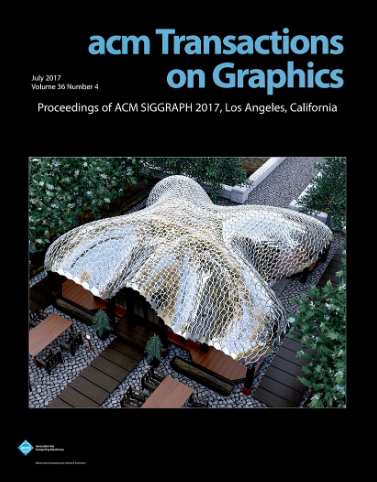NESI:基于神经显式形状相交的几何表示
IF 9.5
1区 计算机科学
Q1 COMPUTER SCIENCE, SOFTWARE ENGINEERING
引用次数: 0
摘要
3D形状的压缩表示紧凑、准确,并且可以直接以压缩形式有效地处理,这对数字媒体应用程序非常有用。该领域最近的研究方法集中在学习的隐式或参数表示上。虽然隐式非常适合于诸如in-out查询之类的任务,但它们缺乏自然的2D参数化,使纹理或法线映射等任务复杂化。相反,参数表示支持后一种任务,但不适合占用查询。我们提出了一种新的学习替代这些方法,基于局部显式曲面或高度场曲面的交叉点。由于显式可以隐式和参数化地简单表示,NESI直接支持比隐式选项更广泛的处理操作,包括占用查询和参数访问。我们使用一组不同方向的高度场有界半空间来表示输入形状,并结合了体积布尔交集。我们首先使用一对相反方向的高度场紧密绑定每个输入,形成双高度场(DHF) Hull。我们通过将其与捕获其内部表面区域的附加局部高度场(HFs)相交来改进该船体。我们将精确捕获每个输入所需的高频函数的数量最小化,并将DHF外壳和局部高频函数紧凑地编码为在\(\mathbb {R}^2 \)的子域上定义的神经函数。这种降维编码提供了高质量的紧凑近似。给定相似的参数计数或存储容量,NESI与现有技术相比显著降低了近似误差,特别是在参数计数较低的情况下。本文章由计算机程序翻译,如有差异,请以英文原文为准。
NESI: Neural Explicit-Shape-Intersection-Based Geometry Representation
Compressed representations of 3D shapes that are compact, accurate, and can be processed efficiently directly in compressed form, are extremely useful for digital media applications. Recent approaches in this space focus on learned implicit or parametric representations. While implicits are well suited for tasks such as in-out queries, they lack natural 2D parameterization, complicating tasks such as texture or normal mapping. Conversely, parametric representations support the latter tasks but are ill-suited for occupancy queries. We propose a novel learned alternative to these approaches, based on intersections of localized explicit , or height-field , surfaces. Since explicits can be trivially expressed both implicitly and parametrically, NESI directly supports a wider range of processing operations than implicit alternatives, including occupancy queries and parametric access. We represent input shapes using a collection of differently oriented height-field bounded half-spaces combined using volumetric Boolean intersections. We first tightly bound each input using a pair of oppositely oriented height-fields, forming a Double Height-Field (DHF) Hull . We refine this hull by intersecting it with additional localized height-fields (HFs) that capture surface regions in its interior. We minimize the number of HFs necessary to accurately capture each input and compactly encode both the DHF hull and the local HFs as neural functions defined over subdomains of \(\mathbb {R}^2 \) . This reduced dimensionality encoding delivers high-quality compact approximations. Given similar parameter count, or storage capacity, NESI significantly reduces approximation error compared to the state of the art, especially at lower parameter counts.
求助全文
通过发布文献求助,成功后即可免费获取论文全文。
去求助
来源期刊

ACM Transactions on Graphics
工程技术-计算机:软件工程
CiteScore
14.30
自引率
25.80%
发文量
193
审稿时长
12 months
期刊介绍:
ACM Transactions on Graphics (TOG) is a peer-reviewed scientific journal that aims to disseminate the latest findings of note in the field of computer graphics. It has been published since 1982 by the Association for Computing Machinery. Starting in 2003, all papers accepted for presentation at the annual SIGGRAPH conference are printed in a special summer issue of the journal.
 求助内容:
求助内容: 应助结果提醒方式:
应助结果提醒方式:


